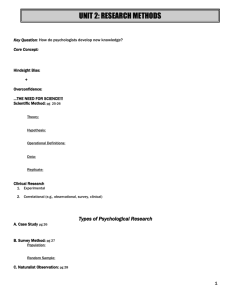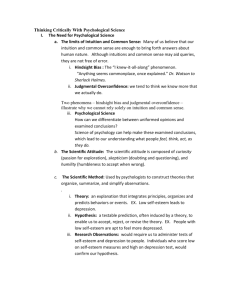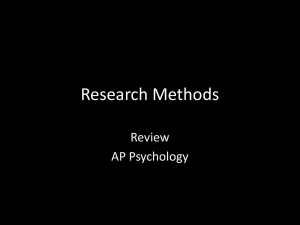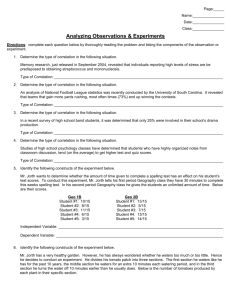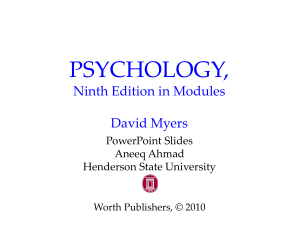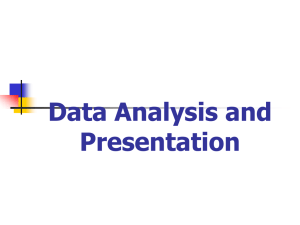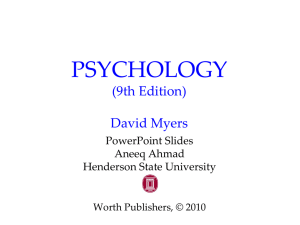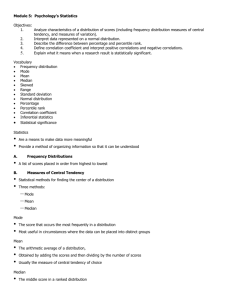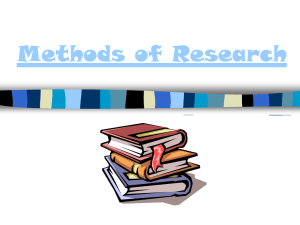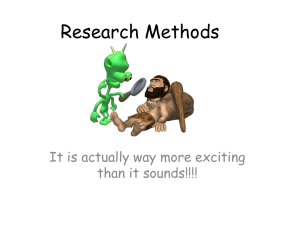The History and Scope of Psychology Module 1
advertisement
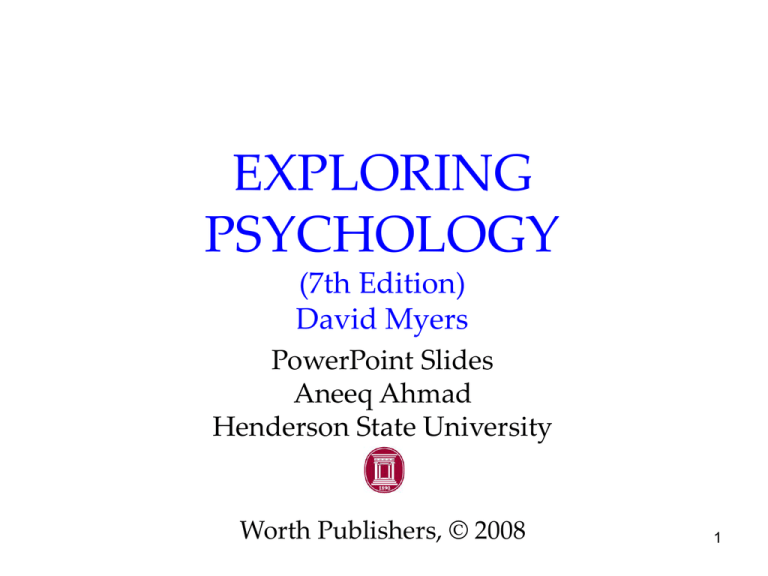
EXPLORING PSYCHOLOGY (7th Edition) David Myers PowerPoint Slides Aneeq Ahmad Henderson State University Worth Publishers, © 2008 1 Statistical Reasoning in Everyday Life Appendix A 2 Statistical Reasoning in Everyday Life Describing Data Measures of Central Tendencies Measures of Variation Correlation: A Measure of Relationships 3 Statistical Reasoning in Everyday Life Making Inferences When Is a Difference Reliable? When Is a Difference Significant? 4 Statistical Reasoning Statistical procedures analyze and interpret data allowing us to see what the unaided eye misses. Composition of ethnicity in urban locales 5 Statistical Reasoning in Everyday Life Doubt big, round, undocumented numbers as they can be misleading and before long, become public misinformation. Apply simple statistical reasoning in everyday life to think smarter! 6 Describing Data A meaningful description of data is important in research. Misrepresentation may lead to incorrect conclusions. 7 Measures of Central Tendency Mode: The most frequently occurring score in a distribution. Mean: The arithmetic average of scores in a distribution obtained by adding the scores and then dividing by the number of scores that were added together. Median: The middle score in a rank-ordered distribution. 8 Measures of Central Tendency A Skewed Distribution 9 Measures of Variation Range: The difference between the highest and lowest scores in a distribution. Standard Deviation: A computed measure of how much scores vary around the mean. 10 Standard Deviation 11 Normal Curve A symmetrical, bell-shaped curve that describes the distribution of many types of data (normal distribution). Most scores fall near the mean. 12 Correlation When one trait or behavior accompanies another, we say the two correlate. Indicates strength of relationship (0.00 to 1.00) Correlation coefficient Correlation Coefficient is a statistical measure of the relationship between two variables. r = + 0.37 Indicates direction of relationship (positive or negative) 13 Scatterplots Perfect positive correlation (+1.00) Scatterplot is a graph comprised of points that are generated by values of two variables. The slope of the points depicts the direction, while the amount of scatter depicts the strength of the relationship. 14 Scatterplots Perfect negative correlation (-1.00) No relationship (0.00) The Scatterplot on the left shows a negative correlation, while the one on the right shows no relationship between the two variables. 15 Data Data showing height and temperament in people. 16 Scatterplot The Scatterplot below shows the relationship between height and temperament in people. There is a moderate positive correlation of +0.63. 17 Illusion of Control That chance events are subject to personal control is an illusion of control fed by: 1. Illusory Correlation: the perception of a relationship where no relationship actually exists. 2. Regression Toward the Mean: the tendency for extremes of unusual scores or events to regress toward the average. 18 Making Inferences A statistical statement of how frequently an obtained result occurred by experimental manipulation or by chance. 19 Making Inferences When is an Observed Difference Reliable? 1. Representative samples are better than biased samples. 2. Less-variable observations are more reliable than more variable ones. 3. More cases are better than fewer cases. 20 Making Inferences When is a Difference Significant? When sample averages are reliable and the difference between them is relatively large, we say the difference has statistical significance. It is probably not due to chance variation. For psychologists this difference is measured through alpha level set at 5 percent. 21
